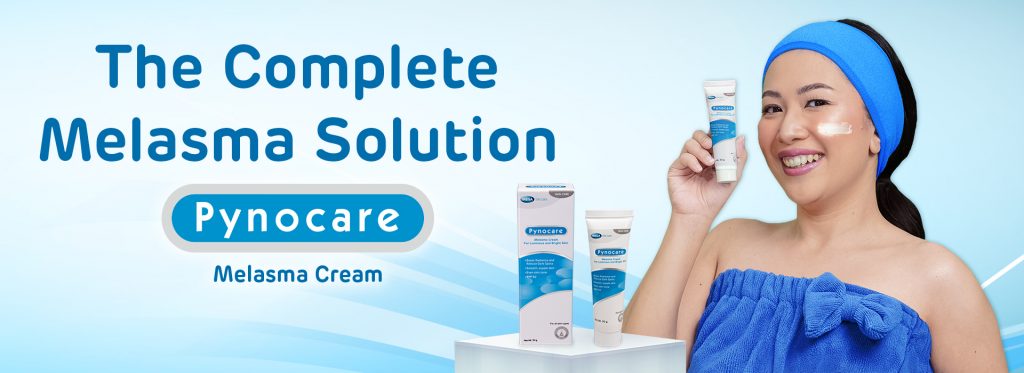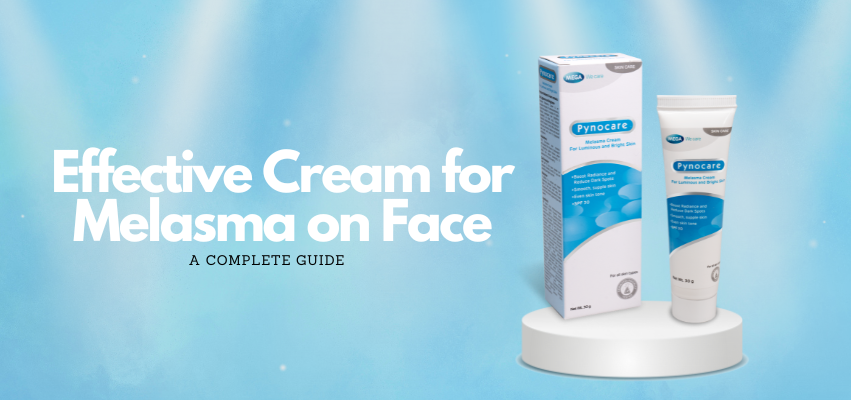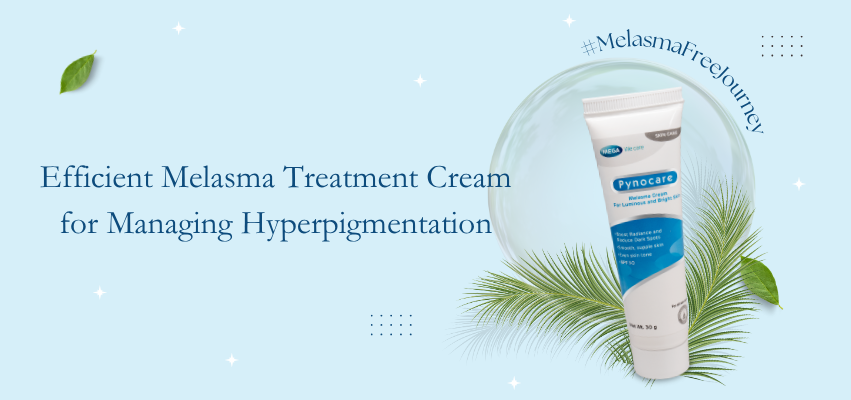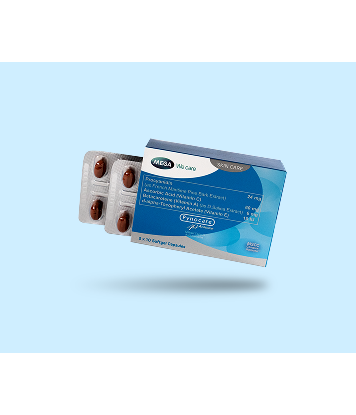Melasma is a common skin condition among Filipinos that causes brown to gray-brown patches, most often on the face. While it is not a cause for concern medically, it can affect self-esteem and emotional well-being. Fortunately, dermatological science has developed effective topical treatments. One of the emerging trusted options is Pynocare Melasma Cream, a reliable cream for melasma on face that helps lighten dark spots and restore a more even skin tone.
Why Does Melasma Appear on the Face?
Melasma is a form of hyperpigmentation, meaning certain areas of the skin produce more melanin than others. Melanin is the pigment responsible for skin color. When its production becomes uneven, it results in visible patches.
Several factors contribute to melasma, including:
- Sun exposure: Ultraviolet (UV) rays stimulate melanocytes, the melanin-producing cells, which worsens pigmentation.
- Hormonal changes: Pregnancy, birth control pills, and hormone therapy can trigger melasma, especially in women.
- Genetics: A family history of melasma increases the likelihood of developing it.
- Skin irritation: Harsh skincare products or treatments can inflame the skin and lead to pigmentation.
Because the face is constantly exposed to sunlight and environmental stressors, it is the most common site for melasma to develop. That is why using a targeted cream for melasma on face is essential for effective treatment.
How Topical Creams Help Lighten Dark Spots
Topical creams work by targeting melanin production, reducing inflammation, and protecting the skin from further damage. The most effective formulations combine skin lighteners, antioxidants, moisturizers, and sun protection. These are all found in Pynocare Melasma Cream, a leading cream for melasma on face.
Key Ingredients in Pynocare Melasma Cream: How They Keep the Dark Spots Away
Pynocare Melasma Cream is formulated with a carefully selected blend of active ingredients that work together to address the root causes of melasma. These ingredients fall into four functional categories: skin lighteners, antioxidants, moisturizers, and sun protection agents. Each plays a unique role in reducing pigmentation, protecting the skin, and promoting a healthier complexion.
A. Skin Lighteners and Brighteners
- Kojic Acid
Kojic acid is a natural compound produced by certain fungi. It works by inhibiting the activity of tyrosinase, an enzyme essential for melanin synthesis. By blocking this enzyme, kojic acid reduces the formation of melanin, which helps lighten existing dark spots and prevent new ones from forming. It is particularly effective for treating post-inflammatory hyperpigmentation and melasma.
- N-Butyl Resorcinol
This synthetic compound is a powerful inhibitor of both tyrosinase and peroxidase enzymes. It disrupts the melanin production pathway more effectively than traditional agents like hydroquinone, making it a potent option for reducing stubborn pigmentation. It also has a favorable safety profile, minimizing the risk of irritation or rebound pigmentation.
- Niacinamide (Vitamin B3)
Niacinamide is a water-soluble vitamin that offers multiple skin benefits. It reduces the transfer of melanin from melanocytes to keratinocytes, which helps decrease the visibility of dark spots. Additionally, it strengthens the skin’s barrier, improves elasticity, and reduces inflammation, all of which are important in managing melasma.
- Tetrahydrocurcumin
A metabolite of curcumin (from turmeric), tetrahydrocurcumin is a potent antioxidant and anti-inflammatory agent. It helps neutralize free radicals that can trigger melanin production and skin damage. It also inhibits tyrosinase activity, contributing to its skin-lightening effects. Its soothing properties make it suitable for sensitive skin affected by melasma.
- Vitamin F (Linoleic and Linolenic Acids)
These essential fatty acids are crucial for maintaining the skin’s lipid barrier. A healthy barrier prevents moisture loss and protects against environmental irritants that can exacerbate pigmentation. Linoleic acid, in particular, has been shown to reduce hyperpigmentation by modulating melanin synthesis and improving skin texture.
B. Antioxidants
- Vitamin E (Tocopherol)
Vitamin E is a fat-soluble antioxidant that protects skin cells from damage caused by UV rays and environmental pollutants. It stabilizes cell membranes, reduces inflammation, and enhances the skin’s ability to retain moisture. When used in combination with other antioxidants, it can amplify skin-brightening effects.
- Resveratrol
Resveratrol is a polyphenol found in grapes and berries. It has strong antioxidant and anti-inflammatory properties. On the skin, it helps inhibit melanin synthesis and protects against UV-induced damage, which is a key trigger for melasma. It also supports collagen production, improving skin texture and resilience.
- Glycyrrhiza glabra (Licorice) Extract
Licorice extract contains glabridin, a compound known for its ability to inhibit tyrosinase activity. It also has anti-inflammatory and soothing properties, making it ideal for calming irritated skin and reducing redness. Its dual action helps lighten pigmentation while promoting skin comfort.
C. Moisturizers
- Sodium Hyaluronate
This is a low molecular weight form of hyaluronic acid that penetrates deeply into the skin. It attracts and retains moisture, plumping the skin and improving elasticity. Well-hydrated skin is more resilient and better able to recover from damage and inflammation.
- Allantoin
Allantoin is a soothing agent that promotes cell regeneration and helps heal damaged skin. It reduces irritation and supports the skin’s natural repair processes, which is beneficial for skin undergoing treatment for pigmentation.
- D-Panthenol (Pro-Vitamin B5)
D-Panthenol is known for its moisturizing and anti-inflammatory properties. It helps maintain skin softness and elasticity while reducing redness and irritation. It also supports the regeneration of the skin barrier, which is crucial for preventing further pigmentation.
- Shea Butter
Shea butter is rich in fatty acids and vitamins, particularly A and E. It nourishes and protects the skin, helping to restore its natural barrier. Its emollient properties make it ideal for dry or sensitive skin, which often accompanies melasma.
- Aloe Vera
Aloe vera is a natural hydrator with anti-inflammatory and antimicrobial properties. It soothes irritated skin, promotes healing, and enhances moisture retention. Its calming effect makes it a valuable addition to melasma treatments, especially for skin prone to sensitivity.
D. Sun Protection
- Octyl Methoxycinnamate (OMC)
OMC is a chemical sunscreen agent that absorbs UVB rays, preventing them from penetrating the skin and stimulating melanin production. By shielding the skin from sun damage, it helps maintain the results of melasma treatment and prevents new dark spots from forming.
How to Use Pynocare Melasma Cream
Using the cream correctly is essential for optimal results. Here is a simple guide:
- Cleanse your face with a gentle, non-irritating cleanser.
- Pat dry with a soft towel. Avoid rubbing.
- Apply a pea-sized amount of Pynocare Melasma Cream to affected areas.
- Massage gently until fully absorbed.
- Use twice daily, morning and evening.
- Follow with sunscreen during the day to protect against UV rays.
Tip: Consistency is key. Results may take several weeks, but regular use of a cream for melasma on face like Pynocare can help fade dark spots and prevent new ones from forming.
Why Choose Pynocare Melasma Cream?
- Scientifically backed ingredients proven to reduce pigmentation
- Gentle on skin, suitable for daily use
- Multi-functional formula that lightens, hydrates, and protects
- Trusted availability at leading pharmacies
If you are looking for a reliable cream for melasma on face, Pynocare offers a comprehensive solution that targets the root causes of pigmentation while nourishing and protecting your skin.

Where to Buy
Pynocare Melasma Cream is available at:
Mercury Drug (physical stores)
Watsons (physical and online stores)
Visit your nearest branch or shop online at Watsons to get your cream for melasma on face and start your journey toward clearer, brighter skin.
References
Hakozaki, T., Minwalla, L., Zhuang, J., et al. (2002). The effect of niacinamide on reducing cutaneous pigmentation and suppression of melanosome transfer. British Journal of Dermatology, 147(1), 20–31. https://doi.org/10.1046/j.1365-2133.2002.04834.x
Mukherjee, P. K., Maity, N., Nema, N. K., & Sarkar, B. K. (2011). Bioactive compounds from natural resources against skin aging. Phytomedicine, 19(1), 64–73. https://doi.org/10.1016/j.phymed.2011.10.003
Parvez, S., Kang, M., Chung, H. S., Cho, C., Hong, M. C., Shin, M. K., & Bae, H. (2006). Survey and mechanism of skin depigmenting and lightening agents. Phytotherapy Research, 20(10), 921–934. https://doi.org/10.1002/ptr.1954
Solano, F., Briganti, S., Picardo, M., & Ghanem, G. (2006). Hypopigmenting agents: an updated review on biological, chemical and clinical aspects. Pigment Cell Research, 19(6), 550–571. https://doi.org/10.1111/j.1600-0749.2006.00334.x
PYNOCARE (Procyanidin + Ascorbic Acid + Betacarotene + d-Alpha-Tocopheryl Acetate)
The first and only oral medicine that is clinically proven to reduce Melasma or dark spots formation in just 8 weeks. Unlike creams, lotions, and gels, it has MSCC or Melasma Skin Clear Complexion Complex formulation that deeply penetrates the inner layers of the skin, to help normalize melanin levels, thus minimizing the appearance of dark spots in a short time.
Mega Lifesciences Limited Inc. or Mega We Care, is actively involved in helping millions of people have access to safe, effective, world-class quality nutritional & herbal supplements, OTC, and ethical products.




















No Comments on Effective Cream for Melasma on Face: A Complete Guide